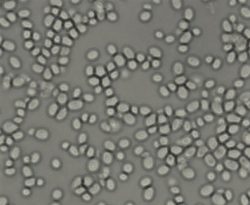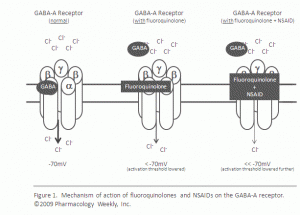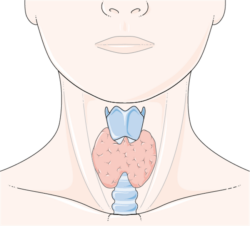In the four years since I was hurt by ciprofloxacin, a fluoroquinolone antibiotic, I have often fantasized about what I would say to the FDA if I had chance. Would I tell them about the pain and suffering I experienced after taking ciprofloxacin? Would I tell them stories about my friends who have had their lives wrecked by fluoroquinolone toxicity? Would I share with them the knowledge that I have gained from obsessively researching fluoroquinolone toxicity? Would I berate them and yell, “Do your ^%^& job?” Would I beg them to, at the very least, keep these dangerous drugs away from children?
On November 5, 2015, I had the opportunity to testify before the FDA’s Antimicrobial Drugs Advisory Committee in a meeting specifically to address the risks of fluoroquinolone antibiotics (Cipro, Levaquin, Avelox, Floxin, and their generic equivalents). I, along with thirty-five other people, testified, and I chose to note the damage that ciprofloxacin did to me and to point out some of the mechanisms through which fluoroquinolones hurt people. Others gave poignant and heart-breaking testimonies about the loss of their health, or the loss of their loved ones, and a few doctors and consumer advocates testified as well. You can read some of the presentations that were provided to the FDA committee in THIS POST.
I am happy to report that the meeting resulted in an overwhelming victory for victims of fluoroquinolone antibiotics. The committee ruled that the current warning labels do NOT appropriately address the risks associated with fluoroquinolones for treatment of sinusitis, bronchitis in those with COPD, or uncomplicated urinary tract infections.
This is a HUGE step in the right direction, and it is my sincere hope that it will result in the FDA dramatically cutting the number of unnecessary fluoroquinolone prescriptions, and better treatment for those who are suffering from adverse reactions to fluoroquinolones.
Acknowledgement of Disability Caused by Fluoroquinolones
Additionally, in the meeting brief, the FDA identified a syndrome associated with fluoroquinolone toxicity—one that “floxies” have been pushing for recognition of for years. It is called Fluoroquinolone Associated Disability (FQAD). According to the FDA:
“While most of the individual AEs (adverse events) that exist within FQAD (fluoroquinolone associated disability) are currently described in fluoroquinolone labeling, the particular constellation of symptoms across organ systems is not. Individuals with FQAD were defined as U.S. patients who were reported to be previously healthy and prescribed an oral fluoroquinolone antibacterial drug for the treatment of uncomplicated sinusitis, bronchitis, or urinary tract infection (UTI). To qualify, individuals had to have AEs reported in two or more of the following body systems: peripheral nervous system, neuropsychiatric, musculoskeletal, senses, cardiovascular and skin. These body systems were chosen as they had been observed to be frequently involved with the fluoroquinolone reports describing disability. In addition, the AEs had to have been reported to last 30 days or longer after stopping the fluoroquinolone, and had to have a reported outcome of disability.”
That acknowledgement from a FDA committee, that fluoroquinolones cause a disabling constellation of symptoms in previously healthy individuals, is a HUGE victory for victims of fluoroquinolones.
Next Steps in the Fluoroquinolone Toxicity Battle
Next, the committee will make recommendations to the FDA. Presumably they will recommend that the FDA update the warning labels to note that the constellation of symptoms associated with FQAD, so as to educate physicians and patients of the risks of this class of antibiotics.
The FDA may enact other means of more properly addressing the risks associated with fluoroquinolone use, such as enrolling fluoroquinolones in the Risk Evaluation and Mitigation Strategies (REMS) program.
Several FDA committee members mentioned the need for further studies of fluoroquinolones, and hopefully some long-term and intergenerational studies will be conducted.
I hope that the FDA does all of these things, and that fluoroquinolone use is curtailed significantly. More than 23 million prescriptions for fluoroquinolones were dispensed in the U.S. in 2011 alone, and as many as 90% of those prescriptions were inappropriate given the true risk profile of fluoroquinolones.
We shall see if the FDA does anything with the information that was presented to the committee, and what they do with the committee’s recommendations.
Thoughts on Advocacy Efforts Directed at the FDA
Other groups of patient advocates who are interested in replicating the success of “floxies” in getting a favorable ruling from a FDA committee may be wondering what caused the FDA to look at fluoroquinolones. I believe that the FDA’s decision to hold the committee meeting was a culmination of several factors.
First, people have been reporting disabling reactions to fluoroquinolones to the FDA using their adverse event reporting system (FAERS). I encourage everyone who has experienced an adverse reaction to a drug or medical device to file a report with FAERS.
Second, more than 150 news stories about the dangers of fluoroquinolones have aired in the last two years. You can view them through THIS LINK. The news stories were prompted by the persistence of victims of fluoroquinolones reaching out to their local news stations.
Third, two citizens’ petitions have been filed with the FDA. One notes that serious psychiatric adverse effects can be the result of fluoroquinolone use. Another petition notes that mitochondrial toxicity should be added to the warning labels for fluoroquinolones.
Fourth, concerned citizens met with the FDA to discuss the dangers of this class of drugs.
Basically, people have been screaming at the FDA through multiple venues demanding that they hear us. At the committee meeting, they heard us.
I encourage everyone who has been hurt by a drug or medical device to report their story to the FDA, to tell their story loudly and persistently through the media, and to organize social media groups so that your message is spread far and wide, and heard loud and clear.
“Floxies” have come a long way in getting the dangers of fluoroquinolones recognized by the FDA, but we still have a long way to go. As nice as acknowledgement and being heard are, action is needed to get what we really want—change in how fluoroquinolones are viewed and prescribed. We are moving in the right direction. One step at a time, and we will reach our goals of prudent and appropriate use of fluoroquinolones, as well as healing for those adversely affected by these drugs.
Information about Fluoroquinolone Toxicity
Information about the author, and adverse reactions to fluoroquinolone antibiotics (Cipro/ciprofloxacin, Levaquin/levofloxacin, Avelox/moxifloxacin and Floxin/ofloxacin) can be found on Lisa Bloomquist’s site,www.floxiehope.com.





















